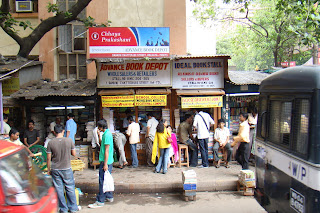It’s been a little like “ten little Indians” from Buenos Aires onwards. S* had to fly back to Calcutta to meet a buyer. B* stayed back in Lima for another day, he was doing good business and anyway he had an appointment in Belem. N* will fly back via New York because he doesn’t have a UK visa. And my boss will stop off in London, leaving me alone on my side of the cabin to fly the last leg to Calcutta via Delhi. Can I collect and stow my luggage, check in and make a flying visit to Piccadilly on a late summer afternoon, all in six and a half hours? I’m risk averse, but the idea is tempting.
In my ears, Katra katra gives way to Khali haath sham aayi. Voices from home, and the yearning for my own armchair and a small wriggling armful welcoming Papa home becomes an almost physical sensation. Another 36 hours or so, and I’ll be sipping my Arabica as a familiar voice grumbles happily at me from across a glass-topped table. The captain’s voice comes over the PA and the A-320 begins the long slide down the sky to Sao Paulo. My ears pop. Time to shut down and pack up, but I can stay with Kishore on the headphones. As the plane loses height, the lights of each city sliding under the wing become clearer, brighter. City grids and highways appear, then tiny specks of headlights. The spangles remind me, Pujo is 3 weeks away. I’m headed home. Mmmm.
This daytime flight over the breadth of the continent has been rewarding. Minutes after the captain announced that we’d be skirting La Paz, a huge expanse of water appeared somewhere off to port. If it stays in view from 38,000 feet for over 10 minutes at 900 knots, it’s enormous. Lake Titicaca, on the border between Peru and Bolivia. Two weeks ago in Bangalore, a friend told me that Bolivia, a land-locked nation, has a navy – a bunch of coast guard cutters on Lake Titicaca. I looked close, even used my camera zoom, but couldn’t see any of them. (Like Spike Milligan, who, when he boarded the train to boot camp in 1940, was handed a picture of Hitler captioned “This is your enemy” – “I searched the whole train but couldn’t find him”)
Earlier, somewhere in the Peruvian Andes, I saw a strange barren plateau. Flat for miles and miles without a trace of habitation, then suddenly the edge crumbled into precipitous ridges and canyons. A very high plateau, because the rim was dusted with snow. It looked like a coffee truffle cake with a bite taken out of the middle, the striation of millennia showing in the canyon sides like a cross section of chocolate layers. And yes, the icing on the edges.
Checking in at Heathrow, I was served by a fragile blonde with a German-Polish name tag. She was quick, helpful, positive. He was at the next counter, manned by a person with a sandalwood dot on his forehead and a bad-tempered mouth. Neither man was happy. I told him he should have flown Jet. He said no, Air India is more Indian than Jet. Say what? I shrugged and went off to find the lounge. (And abandoned my plans for going into town – everybody warned me about Friday evening traffic)
Later, in the lounge, we got to talking. When he introduced himself I was sure I had heard the name before. He told me the real reason for the Air India booking. His wife and he never took the same flight, and this time it had been her turn to fly Jet. I googled him. He’s into steel and distilleries, his father-in-law was a well-known Chief Minister and his firm had been named in a land and loan scam in Madhya Pradesh. But he was pleasant, polite, well-spoken. A good public school does have its plus points. When we taxied for take-off, he peered through from First Class and waved. I went up the aisle and peeked into his section. He was seated cross-legged, rocking a little, reading the Hanuman Chalisa. Fear of flying. What can I say, in the light of the Air France crash in July even I had been a little apprehensive about the long haul over the Atlantic.
Day 2, 11 a.m. Lima time. The stewardess serves me a second cup of coffee, no breakfast, thank you. We’re just over an hour from Delhi. Earlier, the mud-brown dirt-pile hills of eastern Iran and Afghanistan looked like a child’s tracks on a beach. I’ve learnt, though, that even if it looks barren from the sky, greenery is visible when one goes down below 20,000 or so. As I look out of the porthole, the hills have vanished and we’re flying over One Big River, tributaries meandering around it like baby snakes around a Big Mama Python. The fields on either side are big, straight-edged. Given the location, this can only be the Indus.
The next time I look down, we seem to be flying over a cloud-field. No wait, is that the sea? Are we flying south of Karachi? Then a speck of human habitation comes into view, a straight line cuts across the picture, and it all comes into focus. Those aren’t waves, they’re sand dunes. We’re over the Great Rajasthan Desert. It seems to go on and on, but that’s because I keep looking. Gradually the patches of green multiply, run together. As we continue towards Delhi, a flotilla of tiny white puffy clouds takes position over the Punjab, their shadows marking a grid over the checkerboard of fields below.
The captain’s Aussie accent comes over the PA. Half an hour to Delhi, and after that only one more airport and one more flight before I reach home.




